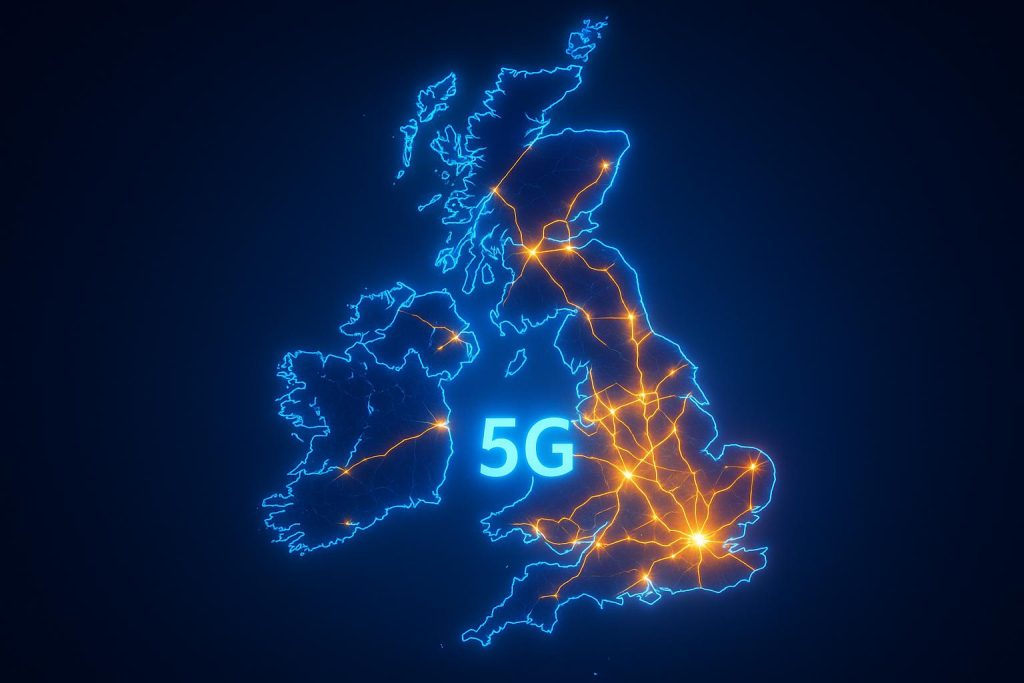Listen to the article
Virgin Media O2 has activated its next-generation 5G Standalone network in over 500 UK locations, covering more than 70% of the population, signalling a major step towards a fully connected digital future with higher speeds, lower latency, and new enterprise opportunities.
Virgin Media O2 has activated its next-generation 5G Standalone (SA) network across 500 towns and cities in the UK, marking what it claims to be the country’s largest deployment of fully independent 5G infrastructure. The rollout now covers over 70% of the UK population, promising users significantly enhanced mobile experiences characterised by higher speeds, improved reliability, and lower latency compared to previous 5G offerings.
This upgrade represents a fundamental technological shift. Unlike earlier 5G implementations that still relied partly on the existing 4G network, Virgin Media O2’s 5G SA is a fully independent network built on advanced radio technology and a fully cloud-native core infrastructure. This transition eliminates many of the constraints associated with legacy 4G elements, enabling not just faster download speeds but also laying the groundwork for transformative applications such as autonomous vehicles, remote healthcare services, and fully robotic manufacturing factories. Indeed, Virgin Media O2 has already made this network available to business customers, which is expected to spur innovation particularly within industrial and enterprise sectors.
The milestone of the 500th location benefiting from this deployment was celebrated in Bakewell, Derbyshire—a historic town symbolising the widespread reach of the network upgrade. This deployment forms part of Virgin Media O2’s broader Mobile Transformation Plan, a £700 million investment programme focused on future-proofing its mobile network. According to Jeanie York, Chief Technology Officer at Virgin Media O2, the company is investing £2 million daily to enhance network performance and broaden coverage, including expanding both 4G and 5G availability, deploying small cells to ease urban congestion, and addressing connectivity blackspots along railways, motorways, and in major venues.
Virgin Media O2’s 5G SA network is powered by a cloud-native, container-based 5G core developed in partnership with Ericsson, which supplies the cloud infrastructure enabling ultra-fast, low-latency connectivity. This collaboration is integral to delivering not only consumer benefits but also advanced capabilities for enterprise users requiring high-bandwidth, low-latency connections.
From a business perspective, Virgin Media O2 has activated 5G SA services tailored to large enterprises, public sector bodies, and SMEs on eligible tariffs, expanding the scope of 5G’s reach into the commercial sector. This activation supports the UK Government’s Wireless Infrastructure Strategy, which aims to achieve full 5G Standalone coverage across all populated areas by 2030. Moreover, Virgin Media O2 has pioneered the deployment of the UK’s first 5G SA small cells in city centres, such as Birmingham, enhancing mobile capacity in high-traffic urban environments by installing compact cells on existing street furniture.
The network evolution continues to advance with Virgin Media O2 Business recently launching the UK’s first commercial plug-and-play 5G Standalone Private Network, a portable solution designed to enable businesses of all sizes to quickly access secure 5G private networks without the need for extensive infrastructure buildout.
Industry commentators have welcomed these developments. Kester Mann, Director of Consumer and Connectivity at CCS Insight, described Virgin Media O2’s rollout as a significant milestone for the UK, noting that beyond improved mobile speeds and reliability, this new infrastructure “paves the way for the introduction of innovative services in the future, particularly for the enterprise market.”
As Virgin Media O2’s network transformation progresses, it is setting a robust platform for the UK’s digital future that extends well beyond enhanced consumer connectivity to revolutionising industrial and public sector applications, all while supporting government ambitions for nationwide 5G Standalone access by the end of the decade.
📌 Reference Map:
- Paragraph 1 – [1], [2]
- Paragraph 2 – [1], [3]
- Paragraph 3 – [1], [2], [7]
- Paragraph 4 – [1], [4]
- Paragraph 5 – [1], [3], [5]
- Paragraph 6 – [6], [7]
- Paragraph 7 – [1], [2], [3]
Source: Noah Wire Services



